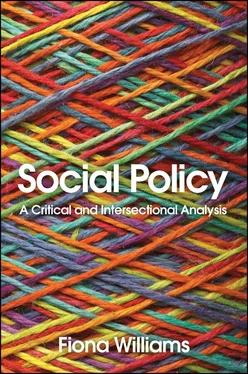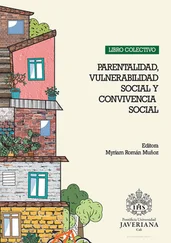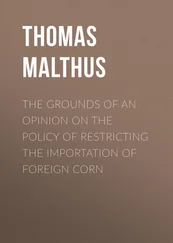1 ...7 8 9 11 12 13 ...21 No other group in America has so had their identity socialized out of existence as have black women. We are rarely recognized as a group separate and distinct from black men, or as a present part of the larger group ‘women’ in this culture. (hooks 1981: 7)
So wrote bell hooks in her introduction to Ain’t I a Woman? Black Women and Feminism . The phrase ‘Ain’t I a Woman?’ was a quotation from a speech delivered in 1851 by the African American campaigner Sojourner Truth for both the abolition of slavery and women’s rights. hooks’s intervention was important in the history of second-wave feminism, as were other activist writings which spoke to an experience in which the race and gender of women of colour decentred them within both feminist and anti-racist/black movements (Combahee River Collective [1977] 1995; Hull et al. 1982; Moraga and Anzaldúa 1983; Lewis and Parmar 1983; Hill Collins 1990). The crucial analytical point to emerge was that race, gender and class could not be understood as single or even incremental axes of oppression but, rather, as interconnected modalities of power that reconstitute identity, experience and practice in specific ways. Intersectionality emerged as the analytic concept in the 1980s to encapsulate this political and institutional problem of invisibility, elaborated by the socio-legal black feminist scholar Kimberlé Crenshaw (Crenshaw 1989). The term became more widespread after the turn of the twenty-first century in a different political and intellectual context, particularly with respect to continuing and widening inequalities, increasing migration and gender diversity. It was to develop critical methodological, empirical and political insights which could be applied to a range of interconnected and contingent social relations and exercises of power (McCall 2005; Lutz et al. 2011; Cho et al. 2013; May 2015; Wilson 2013; Hill Collins and Bilge 2016; Carastathis 2016; Hancock 2016; Bone 2017; Romero 2018; Irvine et al. 2019; Hankivsky and Jordan-Zachery 2019; and, especially, Nash 2019).
For social policy, the importance of an intersectional approach speaks to its potential to critically analyse the complexities of social power and inequalities as well as guiding transformative possibilities for social justice. It operates as theory, method and praxis. It concentrates on excavating the lived experience. It works not as a grand and totalizing theory but as an ‘orientation’ (May 2015: 3), a way of thinking about complexity, contingency and connectedness in social and political phenomena, and a refusal to reduce phenomena to single causes or solutions. These days, intersectionality denotes as much a political position as a conceptual approach, although, to be honest, the word is too long for a placard and too clumsy as a rallying cry. Nevertheless, what it marks is the importance of alliances across difference as a path to transformative change. This has clear relevance to social policy’s concerns with understanding social inequalities and social justice, how to research and make visible those that are hidden, and how to think about the solidarities that can reinscribe universalism with difference.
In recent years intersectionality has begun to be applied to social movements and practice, to politics, and to social and public policy intervention (Wilson 2013; Hill Collins and Bilge 2016; Hankivsky and Jordan-Zachery 2019; Bassel and Emejulu 2018; WBG and Runnymede Trust 2017; Williams 2018; Irvine et al. 2019). The key characteristics of these applications of intersectionality are their attention to the complexity of social inequalities and power and their focus on change and fluidity, challenging fixed and essentialist approaches in which social positions or economic systems are seen as given, natural or overdetermining. Relationality, the contingencies of time and place, the contested, contradictory and unsettled nature of phenomena (including welfare states, their policies and practices) also characterize intersectional policy analysis, as do ideas that emerge from the margins and inform resistance. As Hankivsky and Jordan-Zachery note, it thus enables an understanding of
the differential impacts of policy on diverse populations … it draws attention to aspects of policy that are largely uninvestigated or ignored altogether: the complex ways in which multiple and interlocking inequities are organized and resisted in the process, content and outcomes of policy. In so doing, the exclusionary nature of traditional methods of policy, including the ways in which problems and populations are constituted, given shape and meaning, is revealed. (Hankivsky and Jordan-Zachery 2019: 2)
Intersectionality is not without its criticisms. 3It is important to note that, as a theoretical orientation, intersectionality has different versions and applications (McCall 2005). It has been criticized for becoming an abstract academic theory – a new (or not so new) ‘buzzword’ – which depoliticizes the very forces that brought it into being (Davis 2008). Another ‘depoliticizing’ criticism suggests that, while purporting to be about the multiple and intersecting relations of inequality, the focus on subjective identities and on local, lived experiences in intersectional analysis obfuscates the explanatory power that connects inequality and oppression to global capitalism. Avoiding these pitfalls requires, first, the recollection that the origins of intersectionality in black feminism lie firmly in the struggle against social, cultural, political and economic injustices. Thus, it is important to keep the concept and practice of such contestation central to any contemporary analysis. It is this that protects against reification and depoliticization; and it is this that differentiates it from a mapping of multicultural diversity disconnected from the challenges such diversity makes or is subjected to. Second, one of the promises of intersectional analysis lies in the capacity to link everyday intersubjective experiences to the wider systemic patterns of power and privilege. This means making clear the connections between social, cultural, political and economic injustices so that the nature of the political economy – a form of global financialized capitalism which is patriarchal and racializing – becomes an essential part of the frame of analysis in a way that is neither reductionist nor singly causal, nor monolithic, but allows for its contradictory nature. In synthesizing a critical and an intersectional social policy analysis in this book, the intention is to enhance each in a way that is attentive to the criticisms of both, to build an analysis which can follow through to its political implications.
In the previous chapter I drew attention to the UK Social Policy Association’s report on the continuing marginalization of race and racism in social policy teaching. I have explained in this chapter how this marginalizing effect can be seen in other inequalities research but is most marked for race and racism scholarship. In that context, does using an analysis that focuses on the intersections of different social relations of inequality obscure the racialized differences that really matter? A similar argument from a different perspective might be: by focusing on the intersections between different power relations, I am bound to dilute the entrenched and systematic patterns of gender subordination (or disability, or sexuality, or childhood). Obviously this is possible, but intersectionality is a method that depends on prior understanding of different social relations of power. Applying it requires sensitivity to the contingent nature of political context and to the question of salience. In other words, we have to understand the historical, material and cultural specificities of particular forms of social relations: to be aware of the variability in social, economic, cultural and political salience of different social relations at different times and places to the issues we are researching.
Читать дальше












